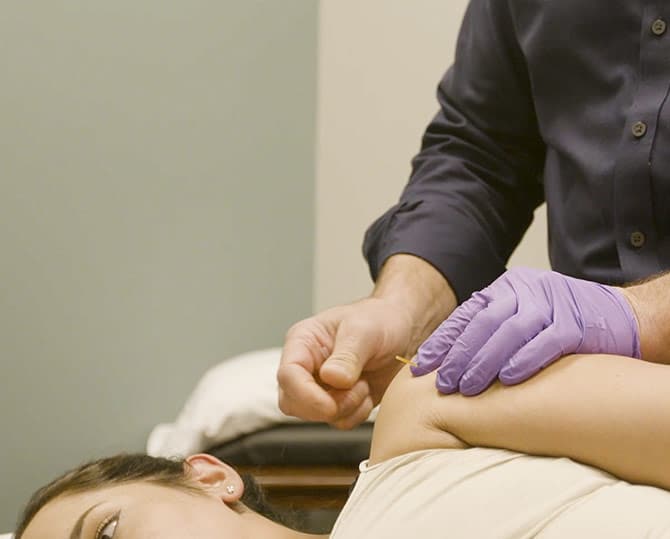Dry Needling Therapy in Wasilla
Deeper Relief
Dry Needling
Providing relief & mobility by directly addressing the source of the restriction.
“I was having migraines and tightness in my neck. Dry needling was the only treatment that gave me results.”
Imagine the relief you get from a deep tissue massage in minutes, but lasting even longer.
When you have tightness in your muscles, it can lead to restricted movement or pain in other parts of your body. Dry needling releases the knots in your muscles by stimulating the myofascial trigger points. In other words, dry needling releases the areas that are causing pain, inflexibility, and/or weakness by going directly to the source.
One session of dry needling by one of our physical therapy experts has been reported to heal long-term chronic pain when other forms of treatment failed including surgery.
Get back to life with Northern Edge Physical Therapy.
Dry Needling Testimonials
See Dry Needling In Action
“After being told I had no choice but to have back surgery I went and saw Keith and his amazing group at Northern Edge in January. I am in awe of my results so far. My leg is no longer numb and dragging, I don’t have to sleep in a recliner and my ortho doc is no longer saying the words surgery. Outside the box therapy and continuing hard work has meant no pain medication and no surgery for me. I am still a work in progress but cannot say how much I love these guys!”
Mariah Jerman
Meet Dr. Garrick Harr
Garrick graduated in 2006 with a Doctorate of Physical Therapy Degree from Loma Linda University in California. He knew Alaska was the place to call home. He moved to Wasilla and started practicing Physical Therapy with an emphasis on Orthopedics.
Over the last decade Garrick has cared for thousands of clients in the Mat-Su Valley. He has attended hundreds of hours of continuing education, and works closely with clients to help them overcome pain and functional limits so they can return to work and get back to enjoying all that Alaska has to offer.
Garrick believes that helping people goes beyond the walls of the clinic, he has given his time volunteering for local groups such as; Family Promise, Walk for Hope, Special Olympics, and coaching local youth hockey organizations.
In his spare time he enjoys backcountry snowboarding, hockey, snow-machining, flying, and spending time in nature with his young family.


